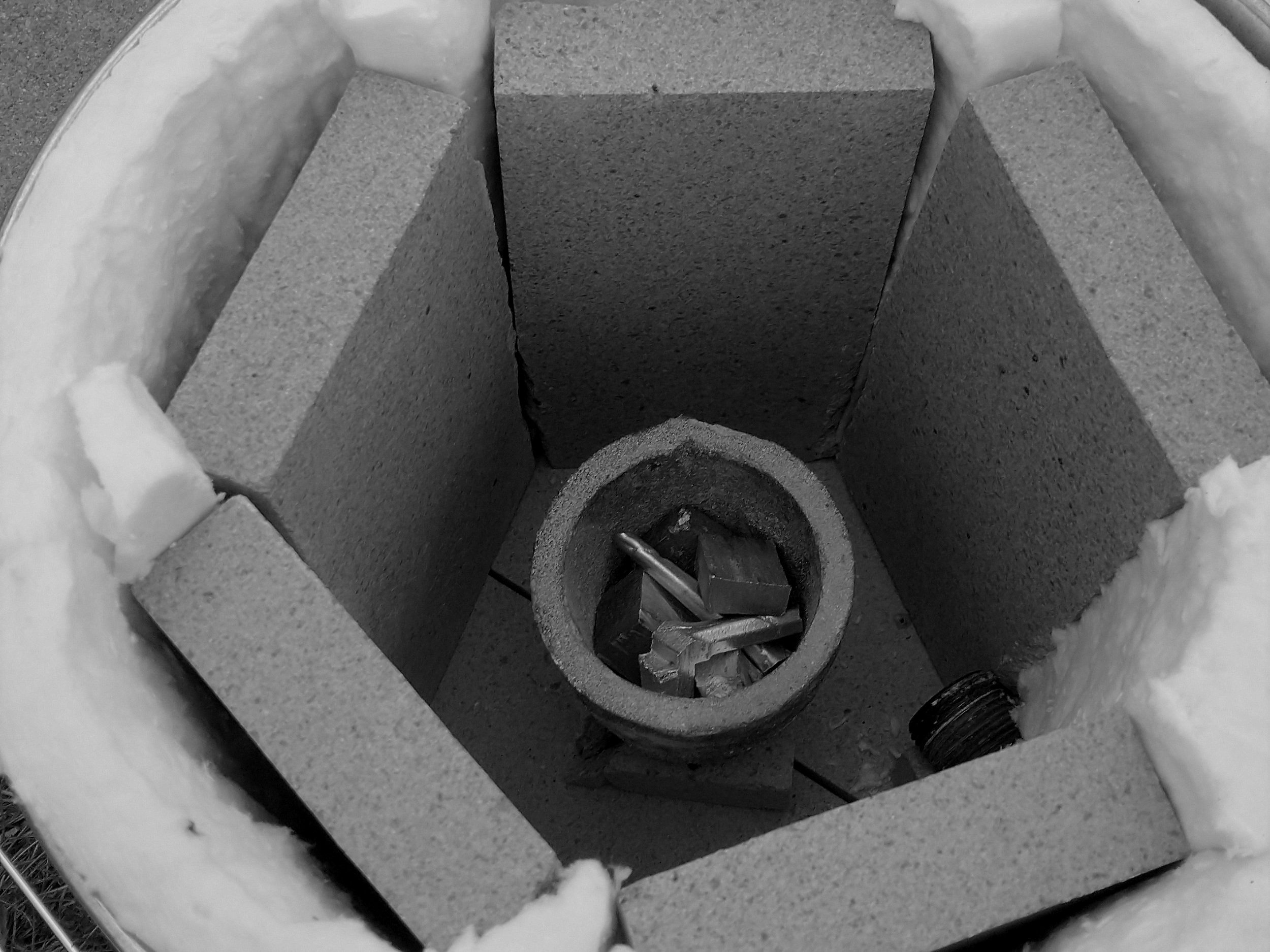
Make it stand out
Backyard Aluminum Casting
Summary:
This idea was born out of making 3D printed parts out of a stronger, more temperature tolerant material. The system originally consisted of a bucket insulated with sand and plaster of paris, and was fueled by charcoal and a hair dryer for airflow. The updated setup consists of a bucket insulated with fire bricks and kao wool and is fueled by a propane torch that funtions similar to a bunsen burner. A crucible positioned in the center contains the aluminum as it melts and makes it easy to pour. A two part sand mold is then used to form the molten aluminum, which is then allowed to solidify before quenching. Finish work is done with sandpaper and a buffing wheel on a dremel.
Skills Utilized:
Casted part design
Two part sand molded parts must have appropriate draft angles, sprue locations, runners, etc where appropriate
Basic manufacturing
Manufacturing the propane torch and foundry required drilling, filing, and cutting of both steel and ceramic materials

The foundry in action.
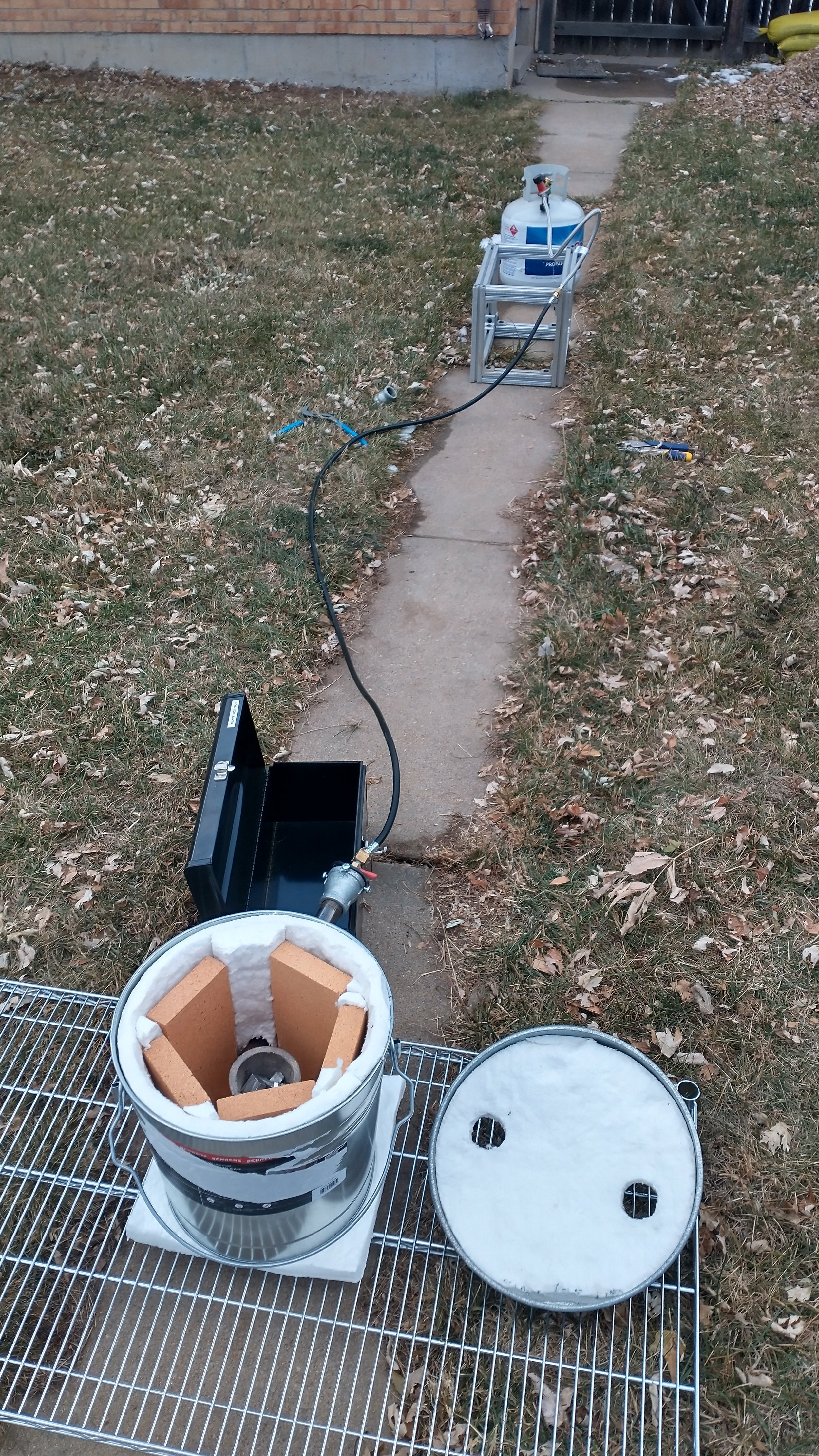
The foundry before ignition. The propane tank is set a safe distance away, and a regulator maintains a safe flow of gas to the foundry. The torch maintains a balance of air and propane, and the fire bricks and kaowool keep the steel bucket from melting or damaging its surroundings.

A close up of the insulation and crucible inside the bucket.
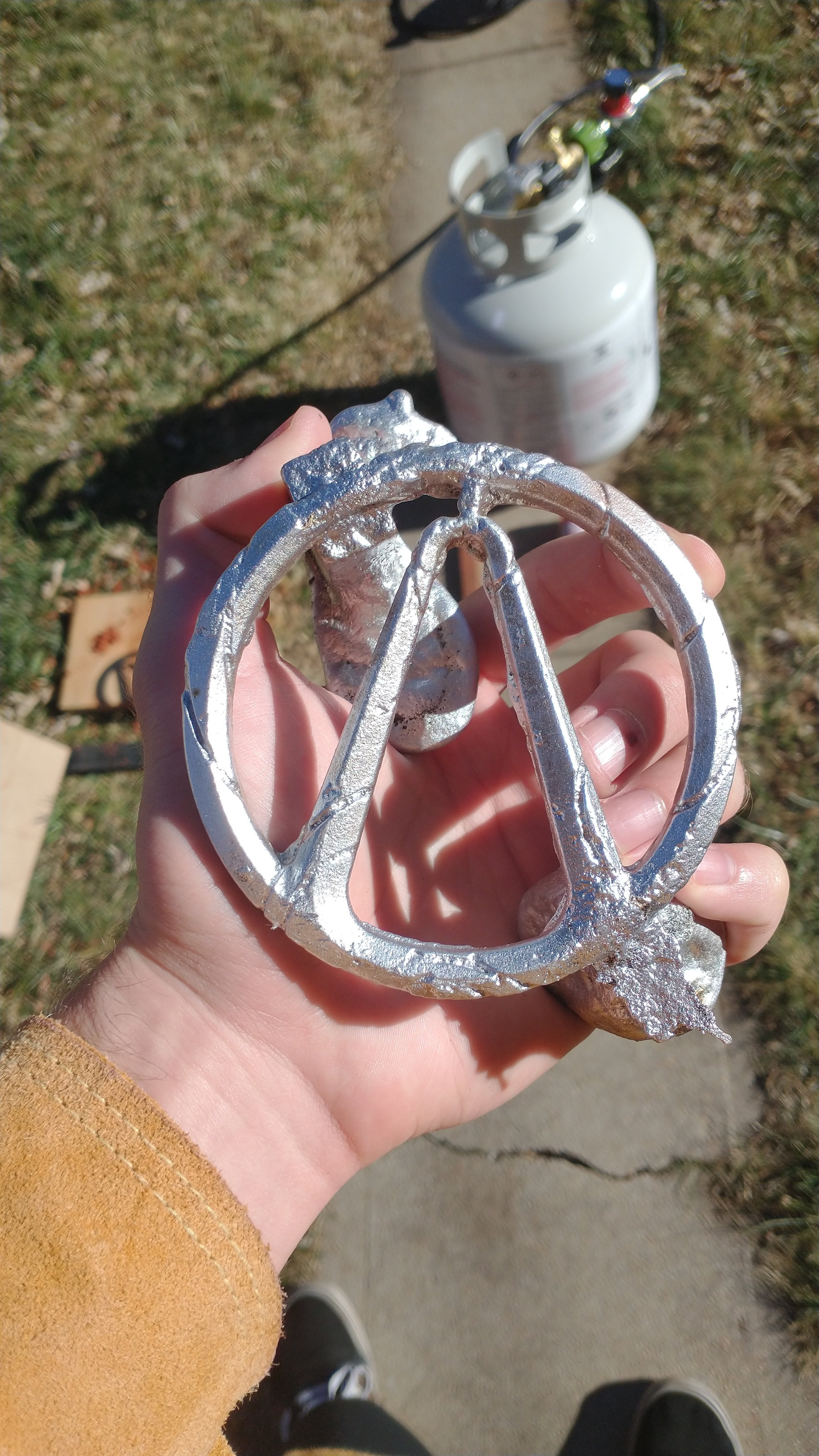
The raw cast including the sprue and riser that ensure good flow into and out of the part to prevent cavities.
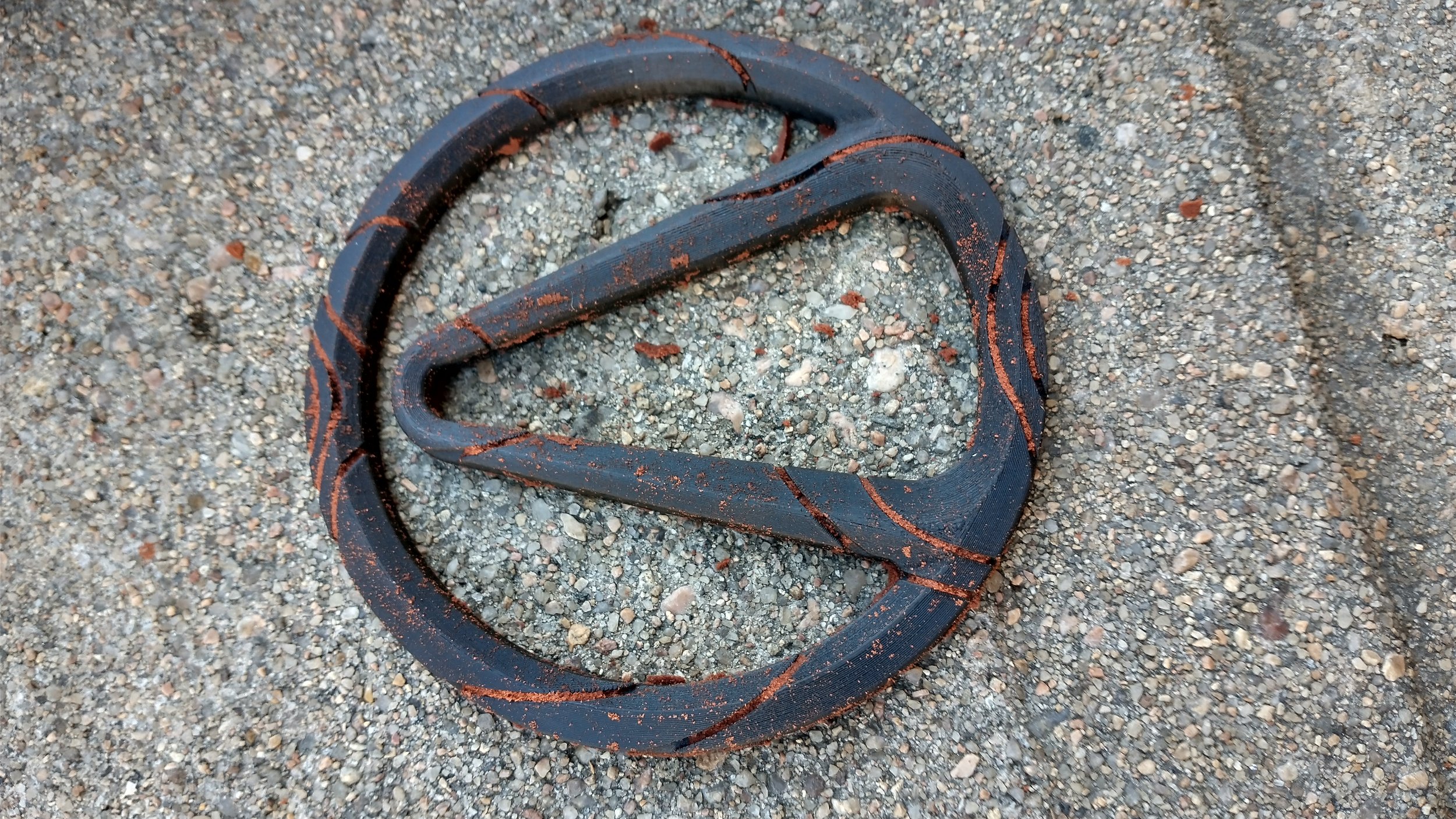
The 3D printed master. Note the casting sand in the cracks of the design. A better mold release or mold material will be needed going forward to capture smaller details.
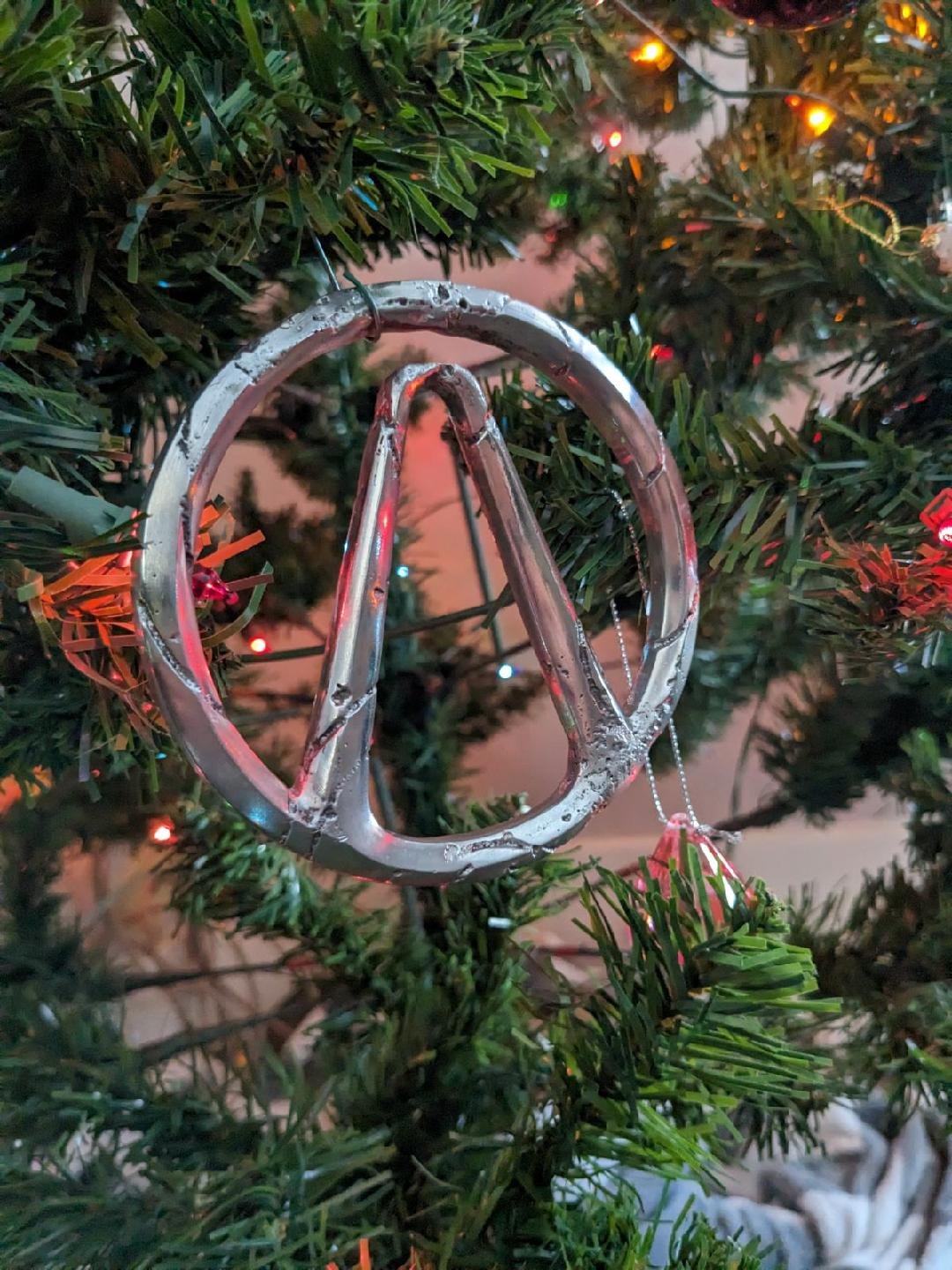
The finished product. Note the air bubbles and errors in small details, likely due to poor molding and using 6061 instead of a more pourable alloy such as 356.
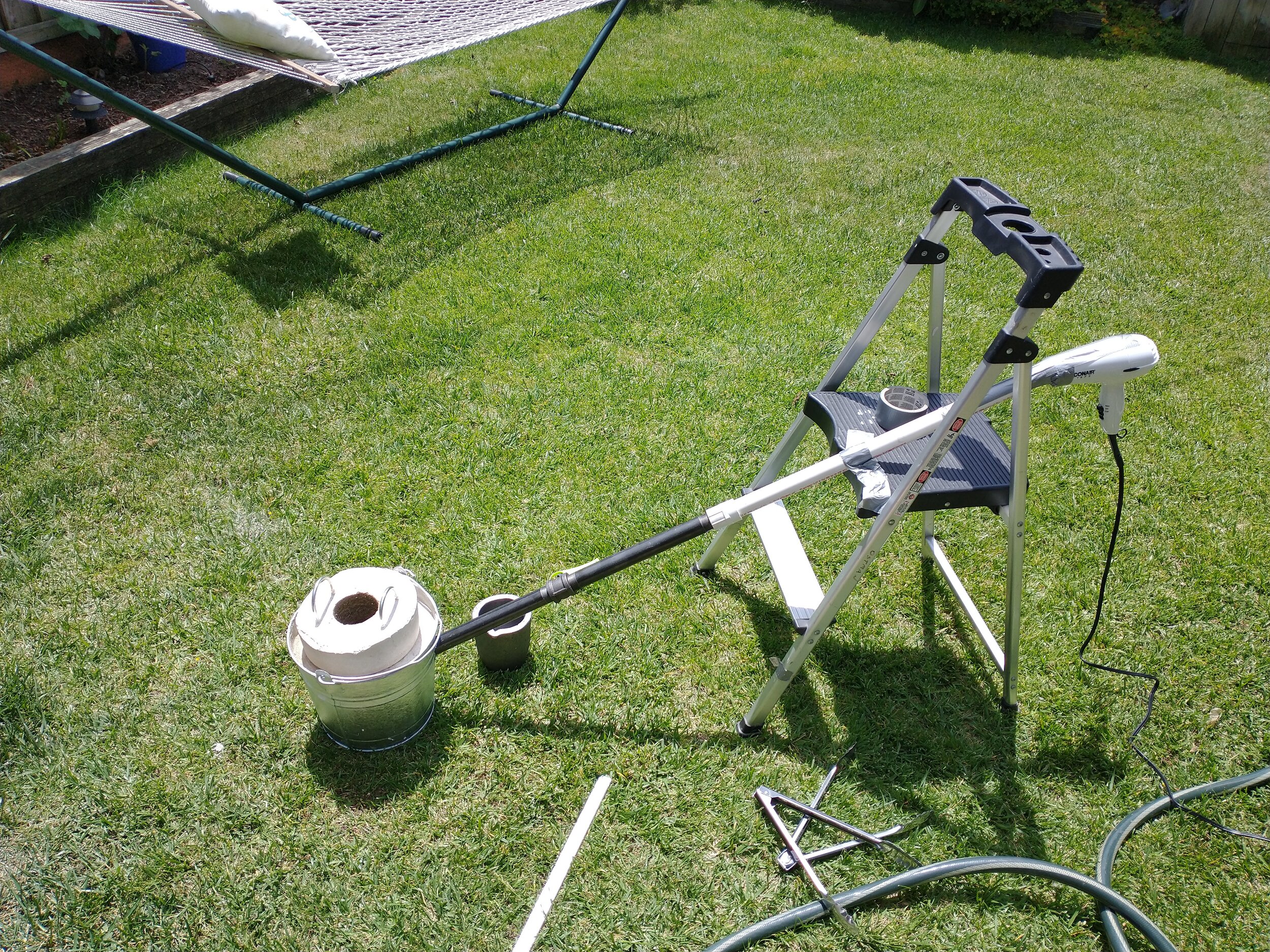
The older setup. The hairdryer attached to the pipe provides airflow, while the charcoal packed around the crucible provides the fuel. To see more about how this earlier version was built, click the image.